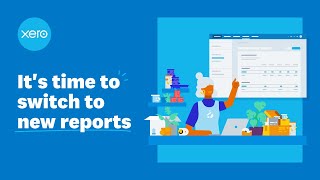Why your business structure matters
With very few exceptions, if you’re selling goods and services, whether you are an individual or a group of people, you’re a business.
What’s important to know when you’re starting out or growing is that the way you structure your business can have an impact on your results and even your long-term success.
So what are the different business structures and how do they work?
Sole trader
If you are the only person running your business, you’re just starting out, and you don’t have people working under you, it’s likely you will have a sole trader business structure.
As a sole trader, there is no distinction between you personally and your company. You are responsible for all debts and liabilities and, should problems arise, it is you who will be accountable.
Despite this, sole trading is a very common and popular way to run a small business. It gives you complete control over your business without the interference of partners or shareholders. It is also the simplest and most cost-effective way to run a small business that has minimal employees and a relatively small turnover.
Most micro businesses operate well with the sole trader model, with insurance in place to protect the owner from losing their assets in the event of something going wrong.
When you work under this model, you will be taxed as an individual in accordance with Australian tax rates, similar to how you would pay tax as a PAYG employee.
Partnership
A partnership is any business that shares responsibilities and profits between two or more individuals. Employee wages are not considered sharing in the profit. Employees are not partners unless you elevate them to that position.
In a partnership, the business is not legally separate from the owners. All responsibilities and debts are the responsibility of the partners. You should draw up a written agreement at the onset of the partnership to define exactly where responsibilities lie. Because all partners are responsible, it is possible for one partner to become responsible for debts accrued up by another partner.
A partnership may work for you if you and another person are just starting to develop your business but once you reach a certain threshold you might want to consider restructuring.
Company
Sole trading and partnerships are effective ways to run small businesses but they tend to restrict growth. At a certain point, it will make sense to make the transition to a company.
Companies are legally separate entities to the owners and partners in the business. This means that if your company runs into trouble, it will be the company and not you that is held accountable.
Companies also have the advantage of being public. This means that they have the potential to go on the stock market for private investors to buy shares and invest in the company. This is an excellent way to raise revenue for a company but also comes with responsibilities to the shareholders.
Forming a company is a very popular and common way to scale your business. It makes you look more professional and legitimate. Doing so, however, will make things more complicated. Companies can become costly to operate so you will need the help of a good small business accountant to let you know if it is worth setting one up. There are also legal responsibilities for companies that sole traders or partnerships aren’t encumbered with; for example there are rules around the appointment and identification of company directors. There are also reporting requirements and hoops to jump through to ensure you remain compliant as a company.
The benefit of having a company, other than the separation of accountability, is that tax is capped. If you’re a sole trader or partnership, your small business accountant may point out once you reach a certain income that you’d be better off restructuring to become a company.
Trust
With a trust, the business structure has an entity called the trustee, which runs the business for an individual or group; the beneficiaries. Having a trust enables the trustee to spread the profits how they see fit and comes with flexible tax benefits. In a trust, the beneficiaries are not liable for debts incurred by the business.
A trust may be a strategy for you to distribute wealth across your family and minimise tax but you will need the help of a professional team to set it up correctly. Have a conversation with your small business accountant about how this structure can work for you.
Which business structure is best for you?
While there are always exceptions, if your business is very small and generating less than $200,000 in revenue, you will probably be a sole trader or partnership. When you have more complexity, people and ambition to grow, it’s time to restructure.
Speak to your accountant as a first port of call. Not only will they guide you, depending on your business goals, they will also help you navigate the legal requirements of the structure you choose.
The right business structure can protect your assets, save you thousands of dollars and set you up for rapid growth. For the best advice on establishing or upgrading your business structure contact Imagine Accounting today on 02 9884 7100.




